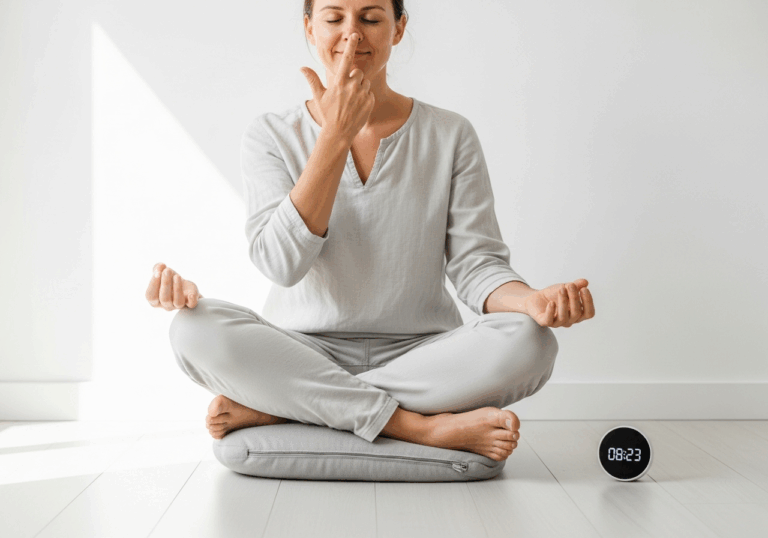Science-Backed Tips
Transform Stress with Guided Box Breathing
Experience a 0.5 SD reduction in stress with guided sessions.
📊 Did you know?
💡 Why It Matters
1️⃣
Guided box breathing can significantly lower perceived stress levels, improving mental health outcomes.
2️⃣
Enhanced HRV is associated with better emotional regulation and resilience against stress.
3️⃣
Regular practice can lead to long-term improvements in mood and overall quality of life.
✅ Try These Micro-Tips
🎯
Engage in guided box breathing sessions for 10 minutes daily.
🎯
Practice box breathing at least 3 times a week for optimal stress reduction.
🎯
Incorporate audio guidance to enhance the effectiveness of your sessions.
🎯
Track your perceived stress levels and HRV metrics to monitor progress.
📚 The study
The significance of these results cannot be overstated; guided box breathing training not only enhances heart rate variability (HRV) but also leads to notable improvements in mood.
This means that individuals practicing guided box breathing can experience a substantial decrease in perceived stress, ultimately enhancing their mental health outcomes.
Enhanced HRV is linked to better emotional regulation and increased resilience against stress, making this practice a powerful tool for anyone looking to improve their overall well-being.
Regularly engaging in guided box breathing sessions can lead to long-term improvements in mood and quality of life, making it a valuable addition to stress management strategies.
As we navigate the complexities of modern life, incorporating such effective breathing techniques can empower individuals to take control of their mental health and foster a more balanced emotional state.
❓ Frequently Asked Questions ❓
Learn more
What is box breathing?
Box breathing is a structured breathing technique that involves inhaling, holding, exhaling, and holding the breath again for equal counts. This method helps to calm the mind and reduce stress levels effectively.
How does guided box breathing differ from unguided breathing?
Guided box breathing includes audio instructions that help individuals maintain rhythm and focus during the practice. Research shows that guided sessions lead to greater reductions in stress and anxiety compared to unguided practices.
What are the benefits of practicing box breathing?
Practicing box breathing can significantly lower perceived stress levels and improve overall mood. It is also associated with enhanced heart rate variability (HRV), which indicates better emotional regulation.
How long should I practice box breathing for optimal results?
For optimal stress reduction, it is recommended to practice box breathing for at least 10 minutes daily. Engaging in this practice at least three times a week can lead to long-term improvements in mental health.
What is heart rate variability (HRV) and why is it important?
Heart rate variability (HRV) refers to the variation in time between heartbeats and is an indicator of the autonomic nervous system’s health. Higher HRV is associated with better emotional regulation and resilience against stress.
Can I track my progress while practicing box breathing?
Yes, you can track your perceived stress levels and HRV metrics to monitor your progress over time. Keeping a record can help you understand the effectiveness of your breathing sessions.
How often should I engage in guided box breathing sessions?
It is recommended to engage in guided box breathing sessions at least three times a week for optimal benefits. Regular practice can lead to significant improvements in mood and overall quality of life.
What is the significance of combining guidance with box breathing?
Combining guidance with box breathing enhances the effectiveness of the sessions by providing structure and support. This approach has been shown to yield stronger reductions in stress and anxiety.
What kind of audio guidance should I use for box breathing?
You should use audio guidance that provides clear instructions and maintains a steady rhythm for the breathing exercises. This can help you stay focused and improve the overall effectiveness of your practice.
How does regular box breathing practice affect my overall quality of life?
Regular box breathing practice can lead to long-term improvements in mood and a reduction in perceived stress. This, in turn, enhances your overall quality of life by promoting emotional well-being and resilience.





